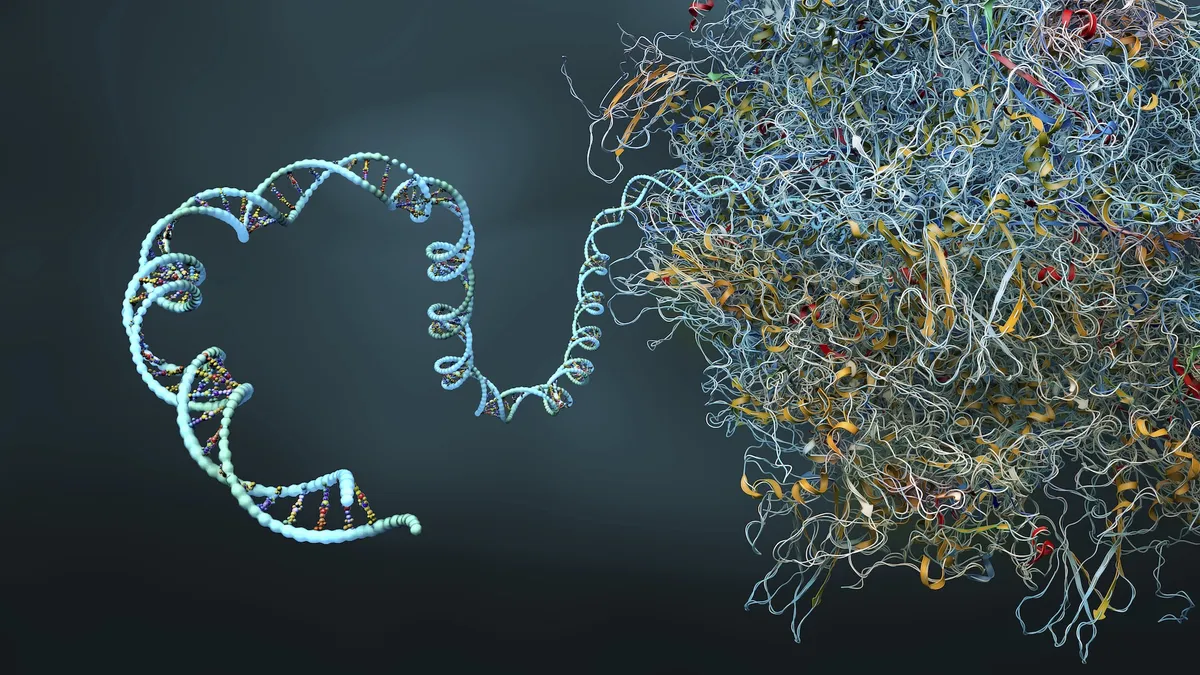
In a groundbreaking study, researchers at IBM and Moderna have successfully utilized a quantum simulation algorithm to predict the intricate secondary protein structure of a 60-nucleotide-long mRNA sequence. This achievement marks the longest mRNA sequence ever simulated on a quantum computer, showcasing the potential of quantum technologies in biotechnology and medicine.
Messenger ribonucleic acid (mRNA) serves as a crucial molecule that conveys genetic information from DNA to ribosomes, guiding the synthesis of proteins within cells. mRNA plays a pivotal role in the development of effective vaccines designed to elicit specific immune responses. It is widely accepted that all the information necessary for a protein to achieve its correct three-dimensional conformation is encoded within its amino acid sequence. Despite being a single strand of amino acids, mRNA possesses a secondary protein structure characterized by a series of folds that define the molecule’s specific 3D shape.
The challenge of predicting the shape that an mRNA molecule will adopt grows exponentially with the addition of each nucleotide, making such predictions increasingly complex as the sequence lengthens. The recent IBM and Moderna experiment, detailed in a study first presented at the 2024 IEEE International Conference on Quantum Computing and Engineering, illustrates how quantum computing can enhance traditional methods for these predictions.
Traditionally, mRNA folding predictions have relied on binary classical computers and artificial intelligence models, such as Google DeepMind’s AlphaFold. While these classical algorithms can manage mRNA sequences with hundreds or thousands of nucleotides, they often do so by excluding higher complexity features like pseudoknots. Pseudoknots are intricate twists and shapes in a molecule’s secondary structure capable of engaging in more complex internal interactions than standard folds, limiting the accuracy of protein-folding prediction models.
Understanding the minute details of an mRNA molecule’s protein folds is essential for creating stronger predictions and, consequently, more effective mRNA-based vaccines. Researchers aim to overcome the challenges faced by even the most powerful supercomputers and AI models by integrating quantum technology into their experiments.
The research team conducted various experiments utilizing quantum simulation algorithms that employed qubits, the quantum equivalent of classical computer bits, to model molecular structures. They began their experiments with just 80 qubits (out of a possible 156) on the R2 Heron quantum processing unit (QPU). By employing a conditional value-at-risk-based variational quantum algorithm (CVaR-based VQA)—a quantum optimization algorithm inspired by techniques for analyzing complex interactions—they successfully predicted the secondary protein structure of a 60-nucleotide-long mRNA sequence. Previously, the best quantum-based simulation model achieved predictions for a 42-nucleotide sequence.
The researchers further scaled their experiments by applying recent error-correction techniques to mitigate the noise generated by quantum functions. The new preprint study provisionally demonstrated the effectiveness of their experimental paradigm, successfully running simulated instances with up to 156 qubits for mRNA sequences of up to 60 nucleotides. Preliminary research also indicated the potential to utilize up to 354 qubits in noiseless environments.
As the researchers noted, increasing the number of qubits employed in running the algorithm, along with scaling the algorithms for additional subroutines, should yield more accurate simulations and enable predictions for longer sequences. However, they also acknowledged that these advancements will require the development of sophisticated techniques for integrating problem-specific circuits into existing quantum hardware, emphasizing the need for improved algorithms and processing architectures to further propel this research forward.